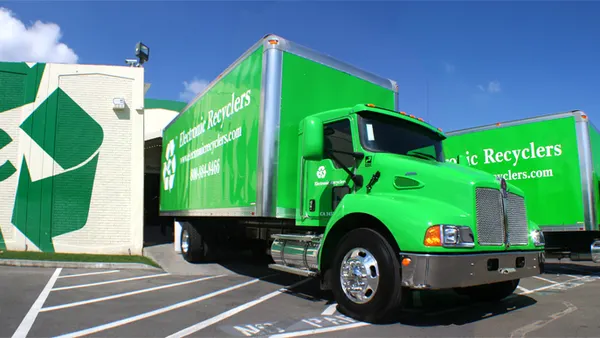Dive Brief:
- A new report conducted by Resource Recycling Systems says initial test results have shown flexible packaging can be adequately captured in single-stream material recovery facilities (MRFs), as reported by Recycling Today.
- The report was commissioned by the Materials Recovery for the Future (MRFF) project, which has many corporate and trade association members, in an effort to find more value in recovering snack pouches, pet food bags and other challenging items. Tests were conducted at three MRFs with optical sorters on their fiber lines: IMS Recycling in San Diego and two Emterra facilities in Canada.
- Based on these results, further research is being considered on adapting existing MRF equipment, installing new equipment, secondary processing and expanding end market opportunities. A community MRF demonstration pilot is seen as the final step in this process.
Dive Insight:
Previous reports have estimated that the flexible packaging industry is worth more than $30 billion and expanding recovery options is seen as a high priority for all involved. MRFF members include major brands such as Dow Chemical Co., PepsiCo and Procter & Gamble, along with trade associations such as the Association for Postconsumer Plastic Recyclers, the Flexible Packaging Association, SPI: The Plastics Industry Trade Association (SPI) and the American Chemistry Council.
Some believe that no one recovery solution will work for this material and it has inspired a range of approaches so far. A new phase of the Energy Bag program recently launched in Omaha, NE to capture certain types of hard-to-recycle plastics for use as cement kiln fuel. Other waste-to-energy methods are seen as possible solutions as well. Dow is also releasing a new type of polyethylene barrier packaging which has been approved by the Sustainable Packaging Coalition for store drop-off programs.
Until more research can be done on end markets, this multi-layer flexible packaging won't be the most desirable material, but the ongoing attention toward it is helpful to all involved. For any municipality with "zero waste" goals, especially those that don't want to use waste-to-energy methods, better options are needed for a material that consumers will continue to dispose of in large quantities for the foreseeable future.











